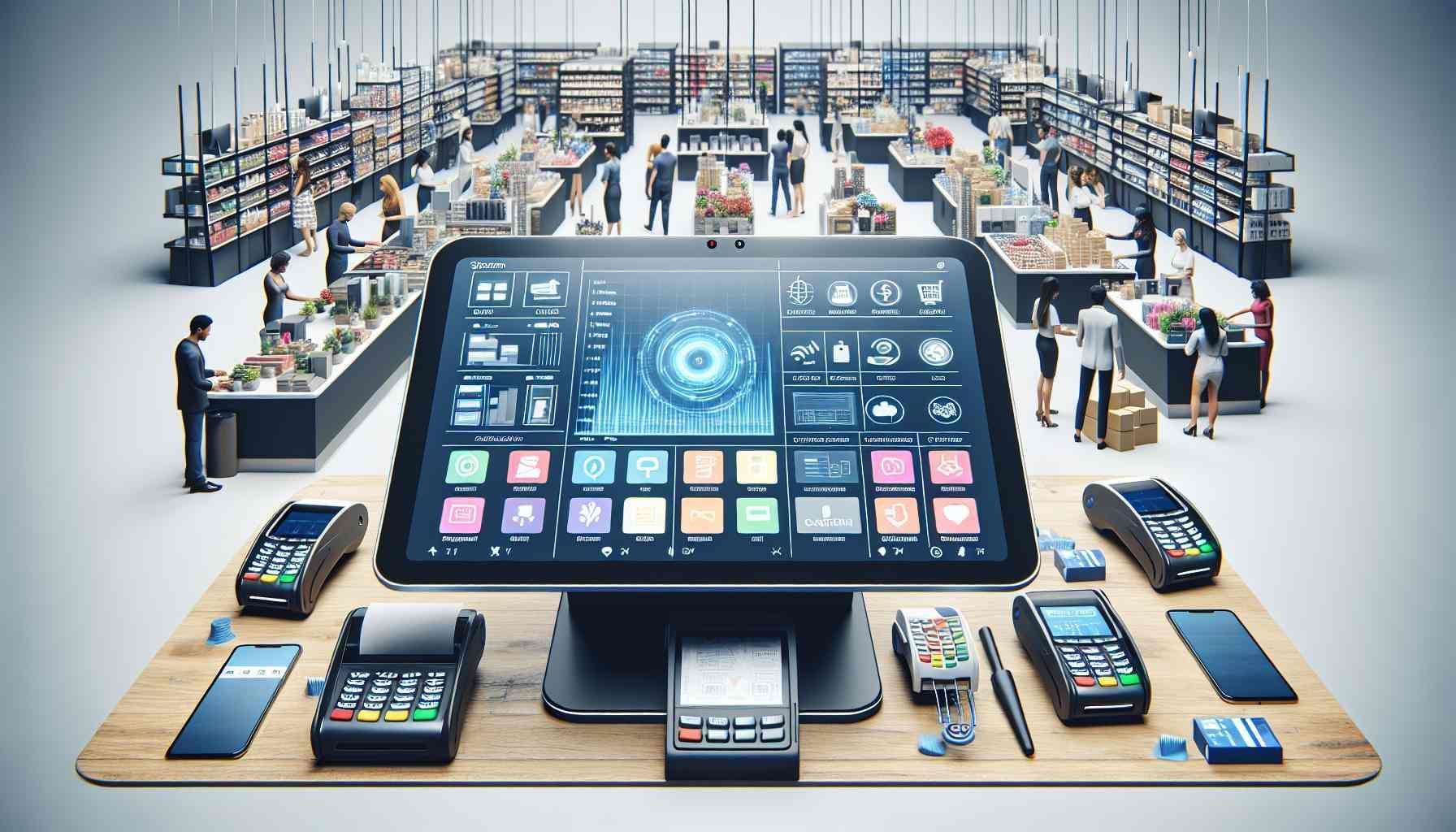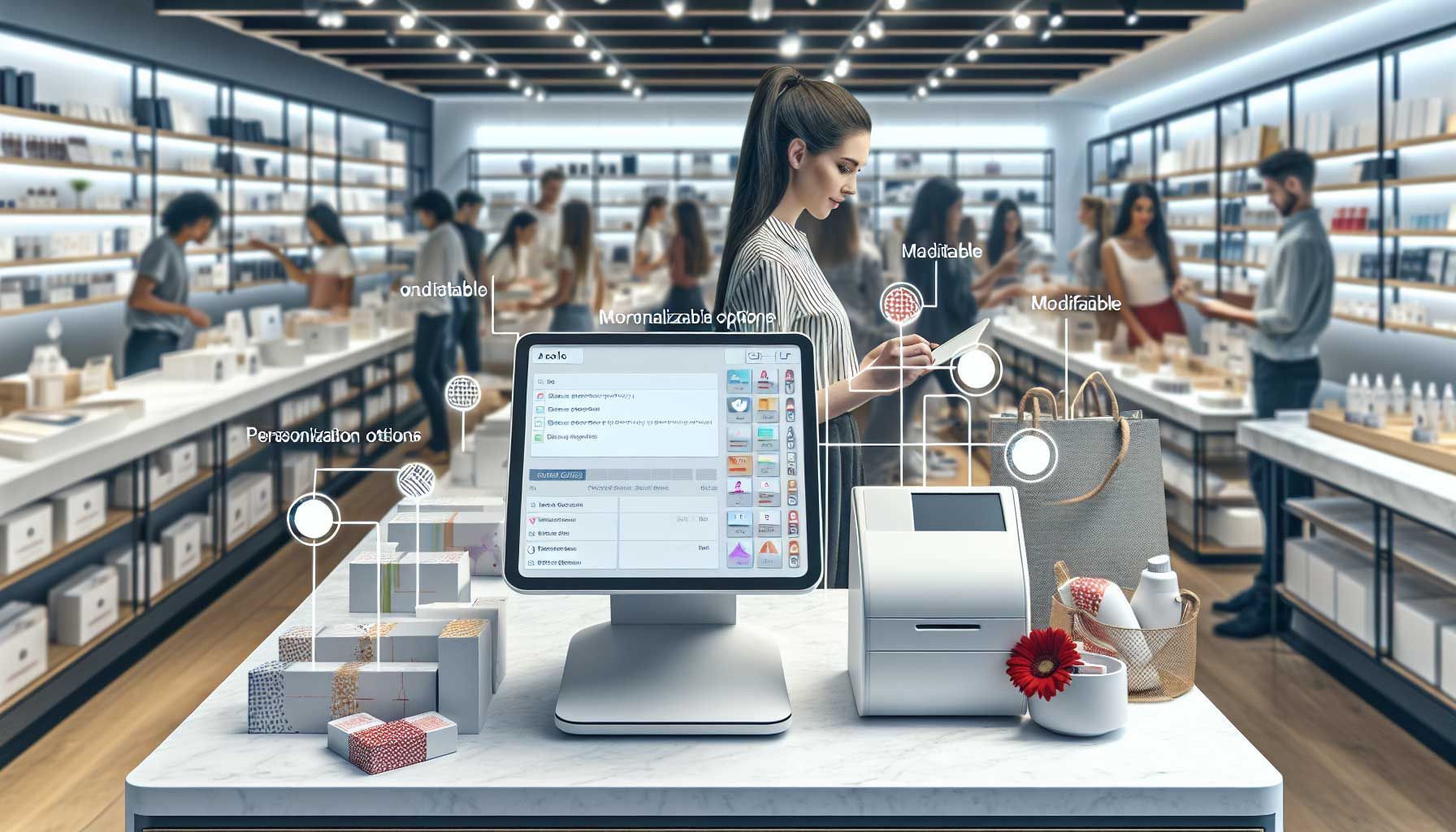Don´t Forget this on New Software Implementation in Your Retail Store
So after a lengthy search you have found the right solution and you now want to implement the software? Every day I meet with retailers who switch to a new system. That’s why I want to find out what the best way is to implement new software in a retail business. As a retailer, you don’t do a new software implementation every week. Which allows you to quickly forget or overlook things. This leads to chaos, frustration and additional costs. Therefore, I researched the best way of software implementation for retailers
. Read through this process and pick out the tips you don’t already know.

Phases of new software implementation
Let us first look briefly at the different phases. The three phases of a new software implementation are pre-implementation, implementation and post-implementation.
Pre-implementation:
This phase focuses on understanding the needs of your retail business and developing a plan to address those needs. The software is not yet implemented but it is being planned. In this phase it is important to gather requirements, define the scope and make preparations.
Implementation:
This phase focuses on implementing the plan developed in pre-implementation and it takes place when there is agreement from all stakeholders about what changes need to be made.
Post-Implementation:
After implementation, it is important to check with all those involved whether the software achieves the desired goals. Check whether everyone is using the system correctly and whether there are still things that need to be tightened up.
10 tips you should know to implement new software
I assume here that your eye has already fallen on the right software choice. After the selection and making agreements with the supplier, it is time to get started with the new system. Trust in the experience of the supplier, but keep thinking yourself and ask critical questions. So discover these ten tips for a successful transition that you should not forget.
- Appoint a project leader and a point of contact
- Check integration with your current system
- Clarify why change is needed
- Try to do as much as possible before the implementation
- Invest enough time and effort in training
- Draw up a clear implementation process plan
- Create a clear picture of the timetable and communicate it internally.
- Stay involved after the implementation
- Measure the improvements with stakeholders
- Stay open-minded for changes
Let’s clarify these tips for a successful implementation of new software at your retail business.

1. Appoint a project leader and a point of contact
The first step is putting someone in charge of the project. That person needs to be the point of contact for the stakeholders. The project leader should have a good understanding of the software implementation process and should be able to delegate tasks accordingly.
The project leader is responsible for ensuring that all stakeholders are updated on progress, and also that they are satisfied with the work being done. They need to ensure that they are not missing any deadlines or milestones, and also make sure that there is a clear plan in place for when deadlines will be missed.
Of course, eventually you will make a success of a new software implementation together. Nevertheless, it is important that one person has the responsibility and keeps a grip on the whole. This role is essential for a smooth transition. Therefore extra tips for this job:
2. Check integration with your current system
A retail business should first do a thorough assessment of their current system, before they implement any new software. This is one of the 5 critical points of store automation.
For example, you need to find out if you have enough bandwidth and storage space for the new software.
In addition, it is astonishing how quickly hardware becomes obsolete. A device that is several years old may no longer be suitable for the switch. You want the system to meet the right quality requirements, especially for POS software with peripherals.
Sometimes this requires a slightly higher investment in advance, but a slow device also costs time and money in the long run. Moreover, it saves a lot of frustration, because the implementation of software already requires enough attention.
Once these things are determined, then they can go ahead and implement the new software.

3. Clarify why the new software implementation is needed
New software is revolutionizing the way retailers do business. It has created an entirely new retail economy that has put brick and mortar stores under pressure. While it is costly to invest in new software, it is worth the investment for better customer service, increased sales and a more competitive edge.
However, your boss or your employees might think differently. Therefore, it is important to identify all of the stakeholders that may be impacted by this change and get their buy-in before proceeding. You want everyone on board so they are invested in making this project a success!
Tell what it yields
Therefore, explain the importance of a new software implementation. For example, that it will help your retail business to be more efficient and reduce costs. It is probably saving time and money which will allow you to focus on more important tasks.
Explain how and why work is changing
For employees, a software implementation often requires a different way of working. Everyone has to get out of their comfortable chair and get started with something new. This requires commitment and flexibility. That is why it is important that they understand why this is necessary.
If people have the right reasons, they will want to change faster. Understand that for them it matters less what the new software delivers for the business. So try to find reasons for the importance of the new software implementation for each individual. That is why it is so important to have the business needs and challenges clear in advance for your choice of supplier.
4. Try to do as much as possible before the software implementation
There is often a difference between start date and implementation date. In between is the preparation phase. Of course this differs per project, but often retailers underestimate the preparation necessary for a successful start or switch. Of course it will work out in the end, but you want to remove as much ambiguity as possible before employees start working with it. This prevents chaos and frustration.
When it comes to replacing an existing system, the right preparation can reduce the amount of time you have to work in two systems. For example, if you get a different POS system, it is important that the hardware and receipts are set up properly before the stock and historical data are transferred.
Often not everything can be done in advance. In the above example, you can think of setting up article groups or turnover groups. Nevertheless, it is better if you only have to do what is necessary instead of having to do the basic setup as well. Last but not least, trying to do as much as possible before the software implementation will also help you understand what your goals are and what you want to achieve. Therefore, be pro-active.
5. Invest enough time and effort in software training
Another important part of the preparation phase is the training of employees. Therefore, invest enough time and effort into training. Employees will need it to understand how things are done differently with this new system.
So the key to successfully implementing new software is a well-planned, well-executed, and thorough training process.
Identity the effort you need to spend on training
The first step in software implementation is to identify the employees who will be using the new software. This will help determine how much time and effort needs to be spent on training.
Create a plan
The second step is to create a training plan for the employees who will be using the new software. The plan should include a timeline for all of the phases of training, including when each phase begins and ends, what materials are required for each phase, and what topics are covered in each phase.
Prepare employees
The third step is to prepare employees for the new software by providing them with materials that they can use before their first day of training. This will help them feel more confident when they start their first day.
The advantage of good training upfront, is that at the start you get fewer questions from colleagues about how it works. This way you can focus more on other parts of the new software implementation.

6. Draw up a clear implementation process plan of new software
Implementing new software in a retail store can be a difficult process. That’s where a good plan and timetable can help. The implementation process of new software is not a one-time event. It is a series of events that need to be planned and executed in a timely manner.
The first step is to define the requirements for the software and then make sure that those requirements are met. This can be done by discussing with stakeholders, customers and employees.
Next, create a timeline that defines the steps of the process. It should include when each phase will start and end.
Lastly, identify any potential roadblocks that might arise during this process and decide how to address them. For example, if there is a lack of resources or budget then it should be discussed before implementation starts.
So draw up a clear checklist for each phase of the new software implementation. In this way you will not overlook anything and the goal can be achieved.
7. Create a clear picture of the timetable and communicate it internally
Successful introduction of new technology is a process that requires careful planning and execution. It is not just about the new technology, but also about the management of people and processes.
Software implementation is a process that can take a while to complete. It takes time to get all the systems and processes in place, and it can be difficult to predict how long it will take.
So the implementation of new software, like any other project, can take longer than expected. Therefore, it’s important to keep this in mind when planning for a timeframe. The time it takes varies from company to company and from project to project. For example, it can depend on how skilled enough your staff is or what the impact is of the change.
The desire for different functions also affects the timeline. Therefore, the scope of the project is usually determined by what you want to achieve in the end and what your budget is. The more features that you want, the more time it will take to implement. Therefore, a good timeline also ensures that you can distinguish critical functions and nice additions.
Finally, make sure that the timeline and roadmap is transparent for all colleagues. This provides clarity about the progress of the new software implementation. This not only saves questions, but also ensures more involvement of stakeholders to make it a success.
8. Stay involved after the implementation
It is important for the retail business and supplier to stay involved after the software implementation. The project leader should not just leave it up to the employees to figure out how to use the software. He or she should help them with any questions and train them after the implementation again on how to use it.
This will ensure that everyone is using the software and getting their full benefits from it. It will also make sure that there are no issues with employees not using it properly or not understanding how to use it.

9. Measure the improvements with stakeholders
A new technology introduction is not just a change in the way you do things, it is an opportunity to measure your success.
The first step to measure success with the introduction of new technology is to define what success means for your organization. Achieving short-term goals or objectives may not be enough for your company. For example, if you are in an industry where you need to constantly innovate and come up with new products, then it is important that your success criteria includes innovation.
In order to measure your success with the introduction of new technology, you need to have a plan in place. You can start by mapping out what your current workflow looks like and what will be different after the introduction of the new software. This will help you identify potential risks and opportunities that may come with this change.
10. Stay open-minded for changes
Change is inevitable. It is a part of every aspect of our lives and it never stops. It is important to stay open-minded for changes and be ready to adapt to the new technologies that come up in the future.
In order to keep up with the ever-changing world, we need to start small. In this way you are still able to adapt. We need to implement new software in our lives and be willing to change things that are not working well for us anymore. Technology updates are always coming out, so it makes sense for us as retail businesses to stay up-to-date on what’s happening in technology so we can adapt accordingly when necessary. It never stops, it always keeps improving and it’s always being updated.

Conclusion: How to Measure Your Success with the Introduction of New Technology
Finally, let’s give a short summary to measure how the software implementation is a success. It starts with a detailed plan of all phases of the implementation and a clear timetable. The appointment of one responsible project leader is essential for this. It is then wise to do as much as possible in advance, so that the transition goes quickly and smoothly. Training of employees is also an important part of this. Make sure people already know how the system works before they actually have to use it. This way you avoid many questions at critical moments. Then stay involved with the people using it after implementation. Check if it is being used properly and if any improvements are needed.

We look forward to share the best strategies with you.
Thank you!

Bring your shop to the next level
Hi, I'm George and I like retail and technology. Therefore, my passion here at Retailgear.com is to provide you with reliable information to automate and digitize your store. You can find out what we can do for your industry through our menu. Also, feel free to check out this updated list of retail tools.
Get inspiration in your inbox to get more sales and store visitors with less effort.











